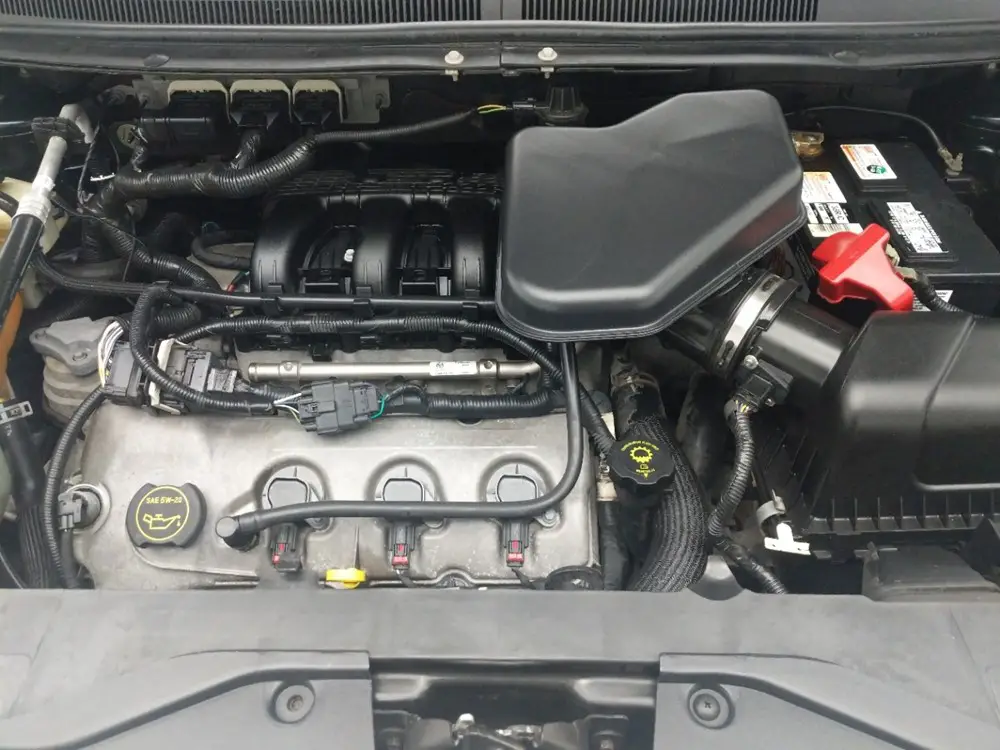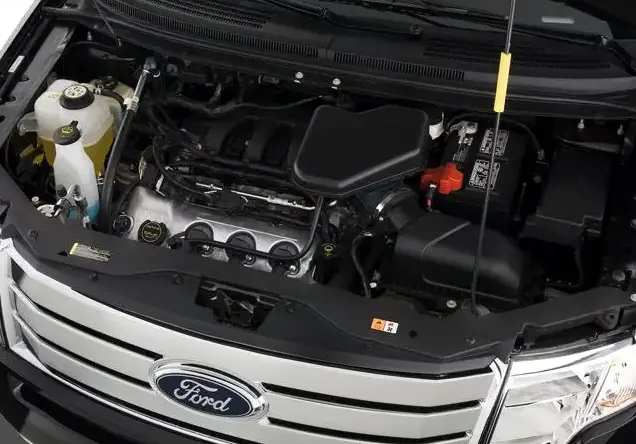Ford Edge engine problems include issues like coolant intrusion, turbocharger failure, and timing chain wear, mainly in the 2.0L EcoBoost engine. These can cause misfires, overheating, and performance loss.
The Ford Edge has been a popular midsize SUV, offering a blend of performance, comfort, and style. However, like many vehicles, it has its share of engine-related issues that owners should be aware of. In this article, we’ll delve into the most common engine problems reported by Ford Edge owners, particularly focusing on models from 2015 to 2022, and provide insights into potential causes, solutions, and preventive measures.

Contents
Ford Edge Engine Problems
It’s essential to understand that engine problems can arise due to various factors, including design flaws, manufacturing defects, and regular wear and tear. The Ford Edge, especially models equipped with the 2.0L EcoBoost engine, has been reported to experience certain recurring engine issues.
Common Engine Problems in Ford Edge
The Ford Edge, particularly models with the 2.0L EcoBoost engine, has been associated with several engine issues over the years. In this section, we will explore the most common engine problems reported by owners and provide insights into their causes and potential solutions.
1. Coolant Intrusion Leading to Engine Failure
One of the most significant and widespread issues reported by Ford Edge owners is coolant intrusion into the engine cylinders. This problem primarily affects models with the 2.0L EcoBoost engine, particularly those manufactured between 2015 and 2018. The intrusion of coolant into the cylinders can lead to:
- Engine Misfires: The presence of coolant in the combustion chamber disrupts the air-fuel mixture, causing misfires.
- Overheating: Coolant loss can result in the engine running hotter than normal, leading to potential overheating.
- Engine Damage: Prolonged coolant intrusion can cause severe damage to engine components, including the head gasket and cylinder head.
Owners have reported instances where the engine light illuminated, followed by engine misfires and overheating. In some cases, the engine required complete replacement due to extensive damage .
2. Turbocharger Failures
The 2.0L EcoBoost engine in the Ford Edge is turbocharged, providing enhanced performance. However, some owners have reported turbocharger failures, often due to:
- Oil Starvation: Insufficient oil supply to the turbocharger can cause it to seize.
- Oil Contamination: Contaminants in the oil can damage the turbocharger bearings.
- Excessive Heat: Prolonged high temperatures can lead to turbocharger degradation.
Symptoms of a failing turbocharger include loss of power, unusual noises, and increased exhaust smoke. Regular maintenance, including timely oil changes with high-quality oil, can help mitigate these issues.
3. Timing Chain Tensioner Failures
The timing chain is a critical component that synchronizes the rotation of the engine’s camshaft and crankshaft. In some Ford Edge models, particularly those with higher mileage, the timing chain tensioner may fail, leading to:
- Engine Noise: A rattling or ticking noise from the engine.
- Engine Misfires: Disruption in timing can cause misfires.
- Complete Engine Failure: In severe cases, timing chain failure can lead to catastrophic engine damage.
Regular inspection and maintenance of the timing chain system can help detect potential issues before they lead to significant damage.
4. Oil Leaks and Low Oil Pressure
Oil leaks are a common issue in older Ford Edge models. Leaks can occur from various engine seals and gaskets, leading to:
- Low Oil Levels: Loss of oil can result in low oil levels, causing insufficient lubrication.
- Engine Overheating: Lack of proper lubrication can lead to increased friction and engine overheating.
- Potential Engine Damage: Prolonged low oil levels can cause severe engine damage.
Regularly checking oil levels and addressing any leaks promptly can prevent these issues.
5. Ignition Coil and Spark Plug Failures
The ignition system in the Ford Edge can experience failures in components like ignition coils and spark plugs, leading to:
- Engine Misfires: Faulty ignition components can cause engine misfires.
- Decreased Engine Performance: Misfires can lead to reduced power and efficiency.
- Increased Emissions: Misfires can result in higher emissions.
Regular maintenance, including timely replacement of spark plugs and ignition coils, can help maintain engine performance.

Preventive Measures and Maintenance Tips
To minimize the risk of engine problems in your Ford Edge, consider the following preventive measures:
- Regular Oil Changes: Use high-quality oil and change it at manufacturer-recommended intervals.
- Monitor Coolant Levels: Regularly check coolant levels and address any leaks promptly.
- Inspect Turbocharger System: Ensure the turbocharger system is functioning correctly and address any issues immediately.
- Maintain Timing Chain System: Regularly inspect the timing chain system for wear and replace components as necessary.
- Check Ignition System: Regularly inspect and replace spark plugs and ignition coils to ensure optimal engine performance.
Frequently Asked Questions
Here are some FAQs about Ford edge engine problems
1. Are all Ford Edge models affected by these engine problems?
No, the issues discussed primarily affect models with the 2.0L EcoBoost engine, particularly those manufactured between 2015 and 2018.
2. How can I prevent coolant intrusion in my Ford Edge engine?
Regular maintenance, including timely oil changes and coolant level checks, can help prevent coolant intrusion issues.
3. What are the signs of a failing turbocharger in a Ford Edge?
Symptoms include loss of power, unusual noises, and increased exhaust smoke.
4. How often should I replace the timing chain in my Ford Edge?
Timing chain replacement intervals vary; consult your vehicle’s manual or a professional mechanic for guidance.
5. Can regular maintenance prevent ignition system failures?
Yes, regular inspection and timely replacement of spark plugs and ignition coils can prevent ignition system failures.
Conclusion
While the Ford Edge offers a comfortable and reliable driving experience, it’s essential to be aware of potential engine issues, particularly in models equipped with the 2.0L EcoBoost engine. By staying informed and adhering to regular maintenance schedules, you can ensure the longevity and performance of your vehicle.